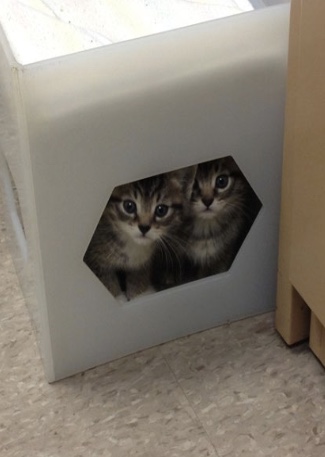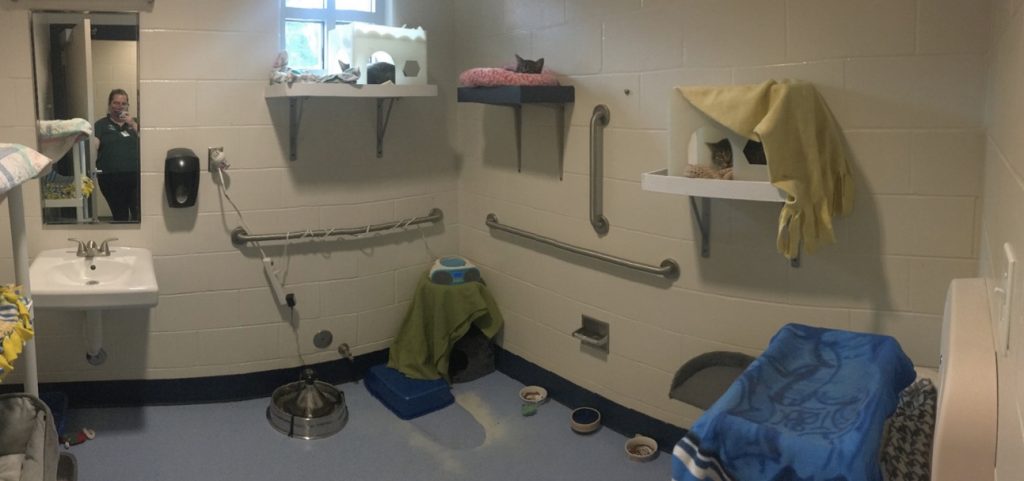News, ideas & inspiration from industry leaders

4 Behavior Tips for Scaredy Cats
The Innovation Bank is back! This week we’re featuring the behavioral modification program for shy cats at Lollypop Farm, Humane Society of Greater Rochester.
More than 320 cats have been treated through Lollypop Farm’s b-mod program, which was started 12 years ago. Following are 4 important tips learned along the way.
Housing Hack #1: A Hiding Place Is a Shy Cat’s BFF
Always, always, always provide a hiding place for your shy cats—and, say the folks at Lollypop Farm, “don’t ever take this away!” It can range from a commercially made hiding box to a cardboard box with a hole cut out, even a towel hung over one side of the cage. (And P.S. this is a necessity for all the cats in your care, not just the shy ones.)
Minimize the # of Moves
It’s important to avoid moving cats around too much—what the behaviorists at Lollypop Farm call “playing cat Tetris”—as multiple moves from one kennel to another, or from one room to another, can be stressful for shy kitties and set their progress back. Smart moves, however, include a relo from a bottom cage to a top cage, a quieter area of your shelter, or a quiet office foster.
Get Creative with Space

In an Extreme Makeover-worthy transformation, Lollypop Farm turned a little-used bathroom into a Shy Cat Colony room. The maintenance team built a glass-paneled doorway, and as you can see here, they were able to keep many of the feline-friendly fixtures. They kept the sink (but removed the automatic censor!), and turned the child’s changing table into vertical space for the cats. Per ASV Guidelines, this cozy kitty haven with natural light is limited to 4 adult cats max.
Food Is Your Friend
The behaviorists at Lollypop recommend using food for counter-conditioning. As they explain it, “That means if there is a scary thing—typically the human, in this case—and there’s a thing a cat likes, such as a high-value treat, the emotional reaction from the food will start to be associated with the human.” In other words: “Keep showing up with a delicious treat, and over time the cat will realize, ‘Oh, this person isn’t so bad!’”
For more tips like this–including how to assess sensitivities to handling and getting these kitties used to human touch, listen to the complete recording.
We encourage you to peruse all the offerings in this series of short, pre-recorded webinars from your colleagues in the field.


